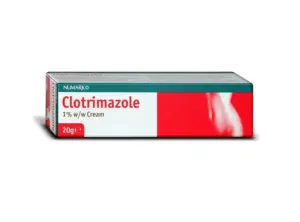In today’s world, the vast array of medications available necessitates vigilant identification to ensure safety. Among these, the white round pill frequently prompts inquiries and concerns. This article explores the safety issues, identification processes, and recommended actions if you encounter an unidentified white round pill.
White round pills are ubiquitous in the pharmaceutical landscape, spanning from over-the-counter remedies to potent prescription drugs. Despite their unassuming appearance, their effects can differ drastically based on the active ingredients they harbor.
White round pills cover a broad spectrum, from common analgesics like aspirin and ibuprofen to powerful prescription medications such as opioids and benzodiazepines. These drugs serve varied therapeutic purposes, and their misuse can result in significant health hazards.
Many people mistakenly assume that the color and shape of a pill can reveal its function. However, this is a dangerous misconception, as these physical characteristics are not reliable indicators of a pill’s identity or safety.
The diversity of white round pills underscores the importance of distinguishing between them accurately. Misidentification can lead to inappropriate consumption, with potential adverse health consequences.
The effects of white round pills are as varied as the pills themselves. While some may provide relief for common ailments, others may pose serious risks if taken incorrectly. This variability makes understanding the active ingredients crucial for ensuring safe consumption.
Prescription medications, in particular, are formulated to treat specific conditions and are dosed accordingly. Misusing these medications by confusing them with over-the-counter options can lead to unintended side effects or inadequate treatment.
Prescriptions serve as a safeguard, ensuring that potent medications are used appropriately. They provide guidance on dosage and administration, which is essential for medications with narrow therapeutic indices. Without this guidance, the risk of adverse reactions or ineffective treatment increases significantly.
Pharmacists and healthcare providers play a critical role in educating patients about their medications. They can provide insights into potential interactions and side effects, reinforcing the importance of taking medications as prescribed.
Accurate pill identification is a vital skill that can prevent accidental misuse and safeguard health. Misidentifying a pill could result in consuming the wrong medication, with potentially harmful or even fatal consequences.
Pill imprints are a reliable method for identification, consisting of unique combinations of letters and numbers inscribed on the pill. These imprints are standardized by manufacturers and help determine the pill’s identity, including its manufacturer, strength, and active ingredients.
Imprints can be cross-referenced with online databases to verify a pill’s identity. This method is particularly useful in environments where multiple medications are stored together, reducing the risk of accidental ingestion.
While less reliable than imprints, the size and shape of a pill can offer additional context. Certain medications have distinctive shapes that can aid in identification, although these characteristics should not be solely relied upon.
The pharmaceutical industry often uses consistent shapes for specific categories of drugs, which can assist in narrowing down possibilities during identification efforts.
Technological advancements have led to the development of pill identifier tools, available both online and as mobile applications. These tools allow users to input a pill’s imprint, size, and shape to determine its identity accurately.
These resources are invaluable for individuals who find stray pills and need to ensure their safety. They provide immediate access to information that can prevent accidental misuse.
Consulting healthcare professionals for pill identification is highly recommended. Pharmacists have specialized training to recognize pills and provide guidance on their use, enhancing patient safety.
Healthcare providers can also offer insights into potential drug interactions and contraindications, emphasizing the importance of professional advice in medication management.
Raising public awareness about the importance of pill identification can prevent medication errors. Educational programs and resources can equip individuals with the knowledge to identify pills accurately and understand the risks of misidentification.
Such initiatives can be implemented in schools, healthcare settings, and community centers, fostering a culture of safety and vigilance around medication use.
Consuming an unidentified pill poses significant risks, as the unknown active ingredients, dosage, and side effects can jeopardize health.
Unknown pills may contain ingredients that trigger allergic reactions, ranging from mild rashes to severe anaphylactic shock. Without prior knowledge of the active components, individuals are at risk of encountering unexpected allergic responses.
Allergies to medications can develop over time, and a previously tolerated drug may suddenly provoke a reaction. This unpredictability underscores the need for caution when dealing with unidentified pills.
An unidentified pill may interact adversely with other medications being taken, leading to reduced efficacy or harmful side effects. Drug interactions can complicate treatment plans and exacerbate health conditions.
Pharmacists and healthcare providers can offer guidance on managing potential interactions, highlighting the importance of consulting professionals before taking new medications.
The risk of overdose is particularly concerning with unidentified pills, especially if they are prescription medications with narrow therapeutic indices. Overdose can result in severe health consequences, including organ damage and death.
Emergency medical services should be sought immediately in the event of a suspected overdose, as prompt intervention can mitigate the damage and improve outcomes.
The uncertainty surrounding unidentified pills can cause anxiety and stress, particularly for individuals who are cautious about their health. This psychological burden can affect overall well-being and highlight the need for accessible identification resources.
Educational initiatives can address these concerns by providing clear guidelines on handling unidentified pills, reducing anxiety and promoting informed decision-making.
Improper disposal of unidentified pills can lead to environmental contamination, affecting water supplies and wildlife. Safe disposal practices are essential to minimize the ecological impact of unused or unidentified medications.
Pharmacies and community programs can offer medication disposal services, ensuring that unused drugs do not pose a risk to human health or the environment.
Encountering an unidentified white round pill requires careful consideration and action to ensure safety.
Never ingest a pill if you are unsure of its identity. Consuming unidentified medications can lead to unforeseen health complications, and the risks outweigh any potential benefits.
Erring on the side of caution is the best approach when dealing with unknown pills, as the consequences of ingestion can be severe.
Pharmacists are trained professionals equipped to assist in pill identification. Bringing the pill to a local pharmacy can provide clarity and ensure that appropriate steps are taken to safeguard health.
Pharmacists can also offer advice on safe disposal if the pill remains unidentified, preventing further risk.
Online resources and mobile apps can help identify a pill based on its imprint, size, and shape. Utilizing these tools can provide peace of mind and prevent accidental misuse.
These tools are particularly useful for individuals who find stray pills in shared living spaces, where multiple medications may be present.
If the pill remains unidentified, safe disposal is crucial. Many pharmacies and community programs offer medication disposal services, ensuring that unused drugs do not pose a risk to human health or the environment.
Proper disposal practices prevent accidental ingestion by children or pets and reduce the potential for environmental contamination.
Reporting unknown pills to local authorities or health organizations can help track potential public health concerns. These reports can contribute to data collection efforts and inform safety initiatives.
Community awareness campaigns can encourage individuals to report unidentified pills, fostering a collective effort to enhance safety and prevent misuse.
Sharing information about the importance of pill identification and the risks of unidentified medications can promote safety in communities. Education empowers individuals to make informed decisions and protect their health.
Community workshops and educational materials can provide valuable resources, ensuring that individuals have the knowledge needed to navigate medication safety confidently.
Understanding the legal implications of possessing unidentified pills is essential, as certain jurisdictions have strict regulations regarding prescription medication possession.
Prescription medications are subject to rigorous regulation by government agencies to ensure their safety and efficacy. Possession without a prescription can be illegal and result in legal consequences.
These regulations are designed to prevent misuse and ensure that medications are used appropriately, reinforcing the need for proper identification and compliance.
Possessing prescription medication without a valid prescription can lead to legal repercussions, including fines and criminal charges. These consequences highlight the importance of adhering to regulations and obtaining medications through legitimate channels.
Legal education initiatives can inform individuals about the potential consequences of possessing unidentified pills, promoting compliance and safety.
Regulatory agencies play a critical role in monitoring medication safety and ensuring compliance with legal requirements. They provide guidelines for safe medication use and disposal, protecting public health and the environment.
Collaboration between regulatory bodies, healthcare providers, and the public is essential for maintaining a safe and effective medication supply chain.
Numerous incidents have occurred where individuals experienced severe health issues due to consuming unidentified pills, underscoring the importance of proper identification.
A young adult mistakenly took a prescription opioid for an over-the-counter pain reliever, leading to an overdose that required emergency medical intervention. This case illustrates the dangers of misidentification and the critical need for accurate identification resources.
Emergency responders played a crucial role in managing the overdose, highlighting the importance of timely medical intervention in such situations.
An individual consumed an unidentified pill found in their medicine cabinet, resulting in a life-threatening allergic reaction. This incident emphasizes the risks associated with consuming unknown medications and the need for caution.
Allergic reactions can escalate rapidly, necessitating immediate medical attention to prevent severe outcomes and ensure patient safety.
These cases reflect broader implications for public health, as they highlight the potential for medication errors and adverse events. They underscore the need for comprehensive education and accessible identification tools to prevent similar incidents in the future.
Healthcare providers and community organizations can use these case studies to promote awareness and advocate for safe medication practices.
The white round pill, though seemingly innocuous, can pose significant safety concerns if not properly identified. Understanding the importance of pill identification and taking appropriate precautions can prevent accidental misuse and protect health.
Accurate pill identification is essential for preventing medication errors and ensuring safe consumption. Utilizing imprints, size, shape, and identifier tools can aid in identifying unknown pills.
Consulting healthcare professionals and adhering to legal regulations are critical steps in maintaining medication safety and compliance.
When in doubt, do not consume any unidentified pill. Prioritize your health and safety by seeking professional guidance and utilizing available resources to ensure informed decision-making.
Community education and awareness campaigns can empower individuals to navigate medication safety confidently, fostering a culture of vigilance and responsibility.
Stay informed, stay safe, and contribute to a safer community by sharing knowledge and promoting awareness of the risks associated with unidentified pills. Your actions can make a difference in preventing medication errors and protecting public health.


